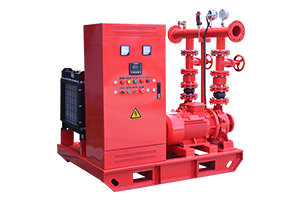How to Install a Diesel Engine Fire Pump?
Sep 30, 2024
Share:
Installing a diesel engine fire pump involves several critical steps to ensure proper setup and functionality. Here’s a concise guide:
1. Site Preparation
- Select Location: Choose a suitable, accessible area with adequate space for maintenance and operation.
- Foundation: Ensure a solid, level foundation that can support the weight of the pump and engine.
2. Gather Materials and Tools
- Ensure you have all necessary components, including the pump, engine, piping, valves, fuel tank, and accessories.
- Gather tools: wrenches, pipe fittings, gauges, and safety gear.
3. Pump and Engine Mounting
- Alignment: Securely mount the diesel engine to the pump, ensuring proper alignment between the engine and pump shaft.
- Fasteners: Use appropriate fasteners to secure the pump and engine in place.
4. Piping Installation
- Suction Line: Install the suction line from the water source to the pump. Ensure the line is free from leaks and has no obstructions.
- Discharge Line: Connect the discharge line from the pump to the fire protection system. Include necessary valves and fittings.
5. Cooling System Setup
- Install the radiator or cooling system as per the manufacturer’s guidelines to ensure the engine operates within safe temperature limits.
6. Fuel System Installation
- Connect the fuel tank to the engine, ensuring proper filtration and any necessary shut-off valves are in place.
7. Electrical Connections
- Connect the battery and electrical systems according to the wiring diagram provided by the manufacturer. Ensure all connections are secure and properly insulated.
8. Control Panel Installation
- Mount the control panel in a convenient location and connect it to the pump and engine. Ensure that all gauges and alarms are properly connected.
9. Priming the Pump
- Fill the pump casing with water to remove air and ensure proper operation. Check for any leaks in the system.
10. Testing
- Start the diesel engine and run the pump under load to ensure it operates correctly. Monitor pressure and flow rates to confirm performance.
11. Final Inspection
- Check all connections, fittings, and components for leaks or issues. Ensure the entire system is functioning as intended.
12. Documentation
- Record installation details, including any maintenance instructions and manufacturer specifications for future reference.
Following these steps will help ensure a successful installation of your diesel engine fire pump, providing reliable performance during emergencies. Always refer to the manufacturer’s installation manual for specific instructions related to your model.






